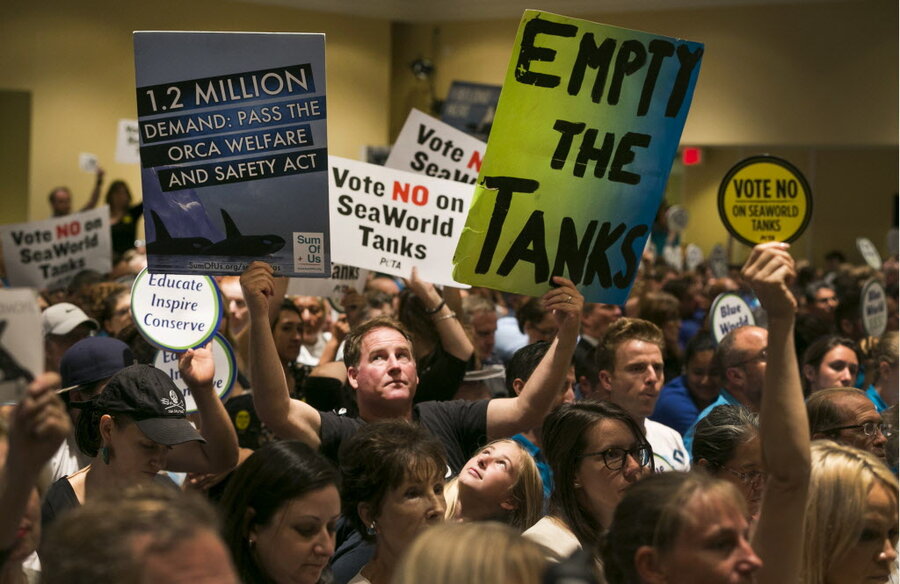Does Sea World deal forecast the end of orca attractions?
Loading...
SeaWorld’s hearing Thursday afternoon with the California Coastal Commission (CCC) on whether or not to approve a bid to expand the San Diego theme park’s facilities for captive orcas was approved, but with one caveat.
SeaWorld San Diego will not be allowed to populate the tanks with new orcas caught in the wild or with orcas bred in captivity. That means the park's 11 killer whales could be the last orcas at the park.
In explaining their rationale, Commissioner Dayna Bochno told The Huffington Post, “[Orcas] don't belong in captivity.” She voted for the proposal, but with reservations.
There are an estimated 56 orcas in captivity worldwide, with 24 of them owned by SeaWorld across each of its San Diego, San Antonio, and Orlando parks.
SeaWorld’s initial proposal to the commission – an outline of its plans for a new and improved orca park at its San Diego location, called the Blue World Project – was supported by the CCC, but only if certain criteria were met.
These included not raising the number of captive orcas held at the San Diego park above the current totals, and protecting the current orcas from construction noise. SeaWorld has said repeatedly that it has not captured any wild orcas since the 1980s, but the new ban on captive breeding places further limits on its prize attraction. Orcas remain one of SeaWorld's biggest draws, despite declining ticket sales.
The Blue World Project, which would dramatically increase the size of the current orca tanks at SeaWorld San Diego, may be part of a larger strategic move by the park to rebrand itself. The Orlando, Fla.-based theme park chain has been beset by stock losses and declining ticket sales since the 2013 release of the documentary film “Blackfish,” which critiqued SeaWorld’s handling of orcas in captivity.
SeaWorld and their supporters expressed disappointment at the new conditions.
“A ban on breeding would sentence these animals to a slow extinction in our care,” John Reilly, president of SeaWorld San Diego, told reporters with the Los Angeles Times.
But Commissioner Greg Cox, who supported the measure, said that any expansion is better than none. “Most people would agree that at least trying to increase the size of the habitat that they live in is better than what they live in now,” he told the LA Times.








